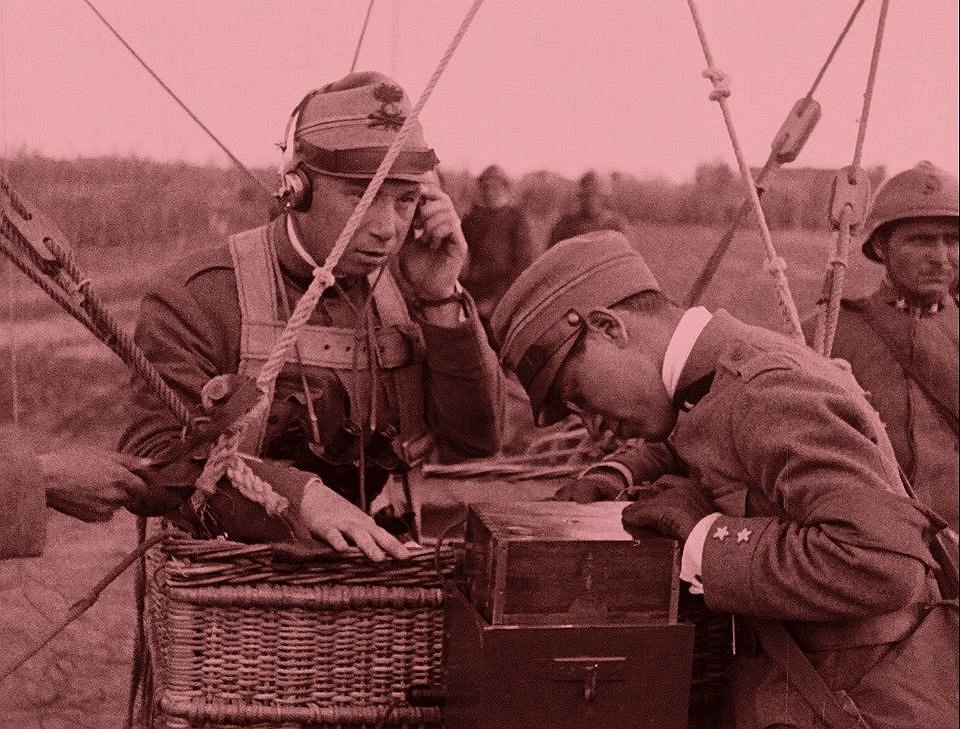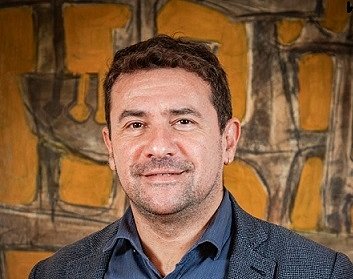Restoration and digitization of the film "Battle from the Astico River to the Piave River"
23.12.2023

The presentation of Simone Venturini at the symposium "East - West Border through film and history" focused on the restoration of the film Battle from the Astico River to the Piave River and on the issue of understanding film sources that are digitized, restored and published today. They are, in fact, the result of technical and cultural interventions that transform film material and make it accessible to the public. At the same time, it is unfortunately inevitable that these interventions will change the material when compared to the original archival material.
The documentary film Battle from the Astico River to the Piave River, filmed by the Italian Royal Army in 1918, shows the central events that decided the outcome of the Second Battle of the Piave River. The battle took place in June 1918 between the Austro-Hungarian Imperial Army and the Royal Italian Army and is considered the last major Austro-Hungarian offensive of the First World War. Among the many war scenes from the field in the film, we also find footage of the flight over Vienna under the leadership of Gabriele D'Annunzio, the surrender of Austria-Hungary and the declaration of victory by the Italian general Armando Diaz.
The film, which is part of the Simonelli fund kept by Kinoatelje, was the subject of a complex restoration project carried out by the Department of Humanities and Cultural Heritage of the University of Udine under the scientific direction of Simone Venturini and Giannadra Sasso. The working group carried out the philological reconstruction and restoration of a wide range of material previously located in numerous archives. In addition to Kinoatelje, the Luce Historical Archive, Cineteca del Friuli, Cineteca Milano, Lobsters Films and the Italian National Film Museum also participated in the project. The aim of the project was to reconstruct the Italian edition from 1918, which was shown in Italian cinemas and theaters from July of the same year. It should be noted here that at least four versions of this film were known: the Italian from July 1918, the French from August of the same year, the later Italian from 1927 and the lost shortened Scottish version from 1918, which was about half as long.
The restoration process of the film Battle from the Astico River to the Piave River was interdisciplinary because many non-filmic sources were helpful in its reconstruction. Among them are bulletins (Official Gazette of the Kingdom of Italy) and magazines (The Bioscope, Kinema, Il Mattino Illustrato, Giornale del Mattino and Il Resto del Carlino) which report on the screening of the film between 1918 and 1933 in various places and cities. Documents from military archives and museums, books, diaries (such as the diaries of Captain Maurizio Rava and Lieutenant Luigi Marzocchi) and photographs of war events taken by photographers of the Royal Italian Army in the field also provided important support for the research.
The approach to restoring the film was conservative in nature, meaning that scratches on the film were removed and copying errors were corrected, while intentionally preserving "flaws" such as anomalies that were imprinted on the film at the time it was projected. For color, which is an extremely important part of the film, the expert group relied on the diagnosis of the pigment that was present and on the study of catalogs from that period.
In the future, the working group under the leadership of Simone Venturini intends to make visible and freely accessible to the public also the hidden set of materials related to the film Battle from the Astico River to the Piave River. The wish is therefore to soon create an expanded edition in the form of an interactive platform under the name Battle Diary, a title that also indicates the scientific battle that is the basis and driving force of the project.
Simone Venturini is a full professor at the University of Udine where he lectures on the preservation and evaluation of cinematographic heritage at the Department of Humanities and Cultural Heritage. His research focuses mainly on the preservation and restoration of films, philology and the technological, economic and cultural history of cinematography. Venturini coordinates and participates in numerous research programs and is the book series coordinator of Plexus.





